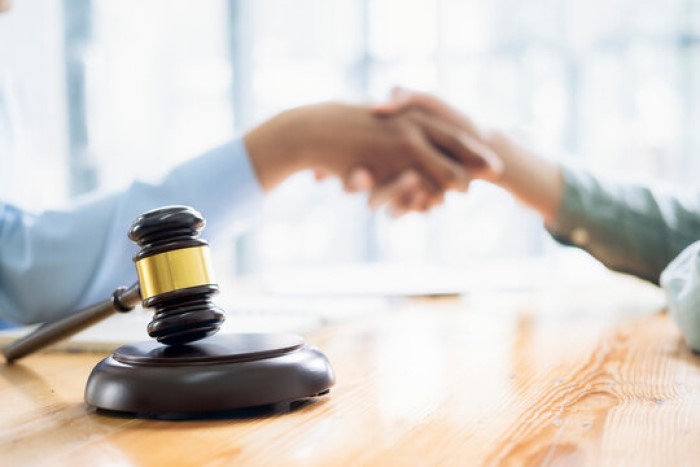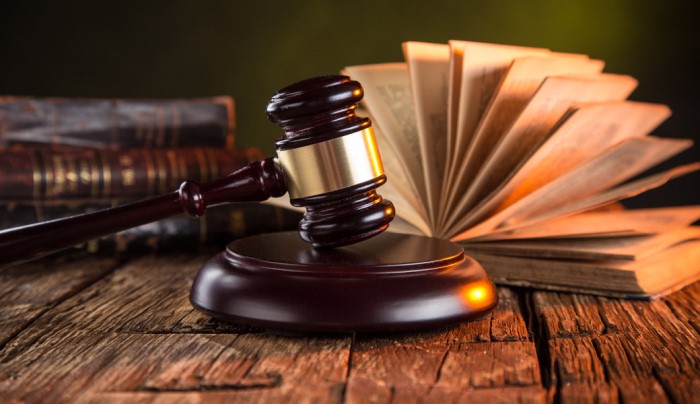Introduction
Copyright infringement occurs when someone uses your copyrighted work without permission. This can include reproducing, distributing, performing, or displaying the work. Copyright protection is crucial because it ensures that creators can control how their work is used and can benefit financially from their creations.
Copyright protection is vital for authors, artists, musicians, and other creators as it provides them with the exclusive rights to their works. Without such protection, creators could lose control over their intellectual property, leading to financial losses and diminished creative incentive.
Copyright law grants creators several exclusive rights, including the right to reproduce the work, create derivative works, distribute copies, and publicly perform or display the work. These rights are automatic upon creation, but registering your copyright provides additional legal benefits.
Recognizing Copyright Infringement
Common Signs of Copyright Infringement
Signs of copyright infringement can vary depending on the type of work. Common indicators include unauthorized copies of your work being sold or distributed, your work being used in another’s creation without credit or compensation, and your content appearing on websites without your permission.
Types of Works Commonly Infringed
Various types of works are susceptible to copyright infringement, including:
- Written content (books, articles, blogs)
- Visual art (photographs, paintings, graphics)
- Music and sound recordings
- Films and videos
- Software and digital content
Digital vs. Physical Copyright Infringement
In the digital age, copyright infringement often occurs online through unauthorized downloads, streaming, and sharing. Physical infringement involves tangible items, such as counterfeit books or CDs. Both types can significantly impact creators, but digital infringement is more prevalent due to the ease of copying and distributing content online.
Initial Steps to Take
Document the Infringement
When you suspect your copyright has been infringed, the first step is to document the infringement. Take screenshots, save web pages, and keep physical copies of the infringing material. Detailed documentation is crucial for any legal actions you may pursue later.
Gather Evidence
Collecting evidence involves not just documenting the infringement but also showing that you own the copyright. This can include original drafts, registration certificates, or metadata. The more comprehensive your evidence, the stronger your case will be.
Identify the Infringer
Determining who is responsible for the infringement can be challenging, especially online. Use tools and resources to trace the infringer, such as WHOIS databases for websites or contacting platforms where the infringement occurred. Sometimes, hiring a private investigator may be necessary.
Legal Considerations
Understanding Your Legal Rights
Knowing your legal rights under copyright law is essential. These rights include the ability to seek damages and injunctions to stop the infringing activity. Understanding the scope of your rights helps in making informed decisions on how to proceed.
Consulting with a Copyright Lawyer
A copyright lawyer can provide invaluable guidance on how to handle infringement. They can help you understand your rights, assess the strength of your case, and recommend the best course of action. Legal advice is particularly crucial if you are considering litigation.
Fair Use and Its Limits
Fair use allows limited use of copyrighted material without permission for purposes like criticism, comment, news reporting, teaching, scholarship, or research. However, fair use has limitations, and misinterpretation can lead to legal trouble. Consult a lawyer to understand if fair use applies to your situation.
Filing a DMCA Takedown Notice
What is a DMCA Takedown Notice?
The Digital Millennium Copyright Act (DMCA) provides a mechanism for copyright holders to request the removal of infringing content from the internet. A DMCA takedown notice is a formal request to an internet service provider or platform to remove the infringing material.
How to Prepare a DMCA Takedown Notice
To prepare a DMCA takedown notice, include:
- Your contact information
- A description of the copyrighted work
- The location of the infringing material
- A statement of good faith belief that the use is not authorized
- A statement under penalty of perjury that the information is accurate
- Your electronic or physical signature
Sending the Notice
Send the DMCA takedown notice to the designated agent of the website or service hosting the infringing content. Many platforms have specific procedures for submitting these notices, so follow their guidelines carefully to ensure your notice is processed promptly.
Responding to Counter Notices
If the infringer files a counter-notice claiming the content is not infringing, the platform may restore the content unless you file a lawsuit within a specified period. Be prepared to act quickly if you receive a counter-notice to protect your rights.
Pursuing Legal Action
When to Consider Legal Action
Consider legal action if the infringer refuses to remove the content or if the infringement has caused significant financial harm. Legal action can be costly and time-consuming, so weigh the benefits and drawbacks before proceeding.
Types of Legal Remedies
Legal remedies for copyright infringement include:
- Injunctions to stop the infringing activity
- Monetary damages for financial losses
- Statutory damages if actual damages are difficult to prove
- Attorney’s fees and court costs
Filing a Lawsuit
To file a lawsuit, you must:
- File a complaint in federal court
- Serve the infringer with the complaint
- Engage in the discovery process to gather evidence
- Present your case in court or negotiate a settlement
Potential Outcomes and Settlements
Possible outcomes of a lawsuit include winning damages, reaching a settlement, or losing the case. Settlements can be advantageous as they save time and legal expenses. However, they may involve compromises, such as agreeing not to pursue further legal action.
Alternative Dispute Resolution
Mediation
Mediation involves a neutral third party who helps both sides reach a voluntary agreement. It can be a quicker and less adversarial way to resolve disputes compared to litigation.
Arbitration
Arbitration is another alternative where a neutral third party makes a binding decision on the dispute. It is often faster than going to court but can be more formal than mediation.
Pros and Cons of Alternative Dispute Resolution
Pros:
- Faster resolution
- Less expensive than litigation
- Confidential process
Cons:
- May not result in a favorable outcome
- Limited appeal options
- Potential for power imbalances in negotiation
Preventive Measures
Registering Your Copyright
Registering your copyright with the U.S. Copyright Office provides additional legal benefits, including the ability to seek statutory damages and attorney’s fees in court. It also serves as public record of your ownership.
Using Copyright Notices
Including a copyright notice on your works informs others that the work is protected and can deter potential infringers. A typical notice includes the copyright symbol ©, the year of publication, and the copyright owner’s name.
Implementing Digital Watermarks
Digital watermarks are embedded into digital content to identify the owner and deter unauthorized use. They can be visible or invisible and provide a way to track and prove ownership of digital works.
Monitoring and Enforcement Strategies
Regularly monitor the internet and other platforms for unauthorized use of your works. Use tools and services that offer monitoring and enforcement, and be proactive in addressing infringements as they occur.
Personal Stories or Case Studies
Case Study 1: A Photographer’s Battle
A professional photographer discovered that several of her images were being used without permission on a popular blog. She documented the infringement, gathered evidence, and filed a DMCA takedown notice. When the infringer filed a counter-notice, she consulted a lawyer and eventually reached a settlement that compensated her for the unauthorized use.
Case Study 2: A Writer’s Legal Journey
An author found that his ebook was being sold on multiple unauthorized websites. He took immediate action by sending DMCA takedown notices and engaged a copyright lawyer to pursue legal action against the most significant infringers. Through persistent efforts, he managed to have the illegal copies removed and received compensation for his losses.
Case Study 3: An Artist’s Experience
A digital artist noticed her artwork being used on merchandise without her consent. She used social media to raise awareness and contacted the companies selling the products. With the help of a copyright lawyer, she filed a lawsuit and won a substantial settlement, which also served as a deterrent for future infringements.
Expert Insights
Interviews with Intellectual Property Lawyers
Intellectual property lawyers emphasize the importance of registering your copyright and being vigilant about monitoring your works. They recommend taking swift action when infringement is detected to maintain control over your intellectual property.
Advice from Copyright Experts
Copyright experts advise creators to educate themselves about their rights and the legal tools available to them. They also highlight the value of preventive measures, such as watermarking and using copyright notices, to protect their works from infringement.
Common Mistakes and How to Avoid Them
Common mistakes include failing to document infringements, not registering copyrights, and waiting too long to take action. To avoid these pitfalls, creators should stay informed about copyright law, keep thorough records, and seek legal advice when necessary.
Conclusion
Summary of Key Points
Copyright infringement is a serious issue that can significantly impact creators. Recognizing infringement, documenting evidence, and understanding your legal rights are crucial steps in protecting your intellectual property. Whether through DMCA takedown notices, legal action, or alternative dispute resolution, there are various ways to address infringement and seek remedies.
Protecting intellectual property is essential for maintaining control over your creative works and ensuring that you receive the financial benefits of your efforts. By taking proactive measures and being vigilant, you can safeguard your rights and continue to create with confidence.
If you believe your copyright has been infringed, don’t hesitate to take action. Whether through legal channels or preventive measures, you have the power to protect your intellectual property and hold infringers accountable. Stay informed, seek professional advice, and assert your rights to ensure that your creative works are respected and valued.




